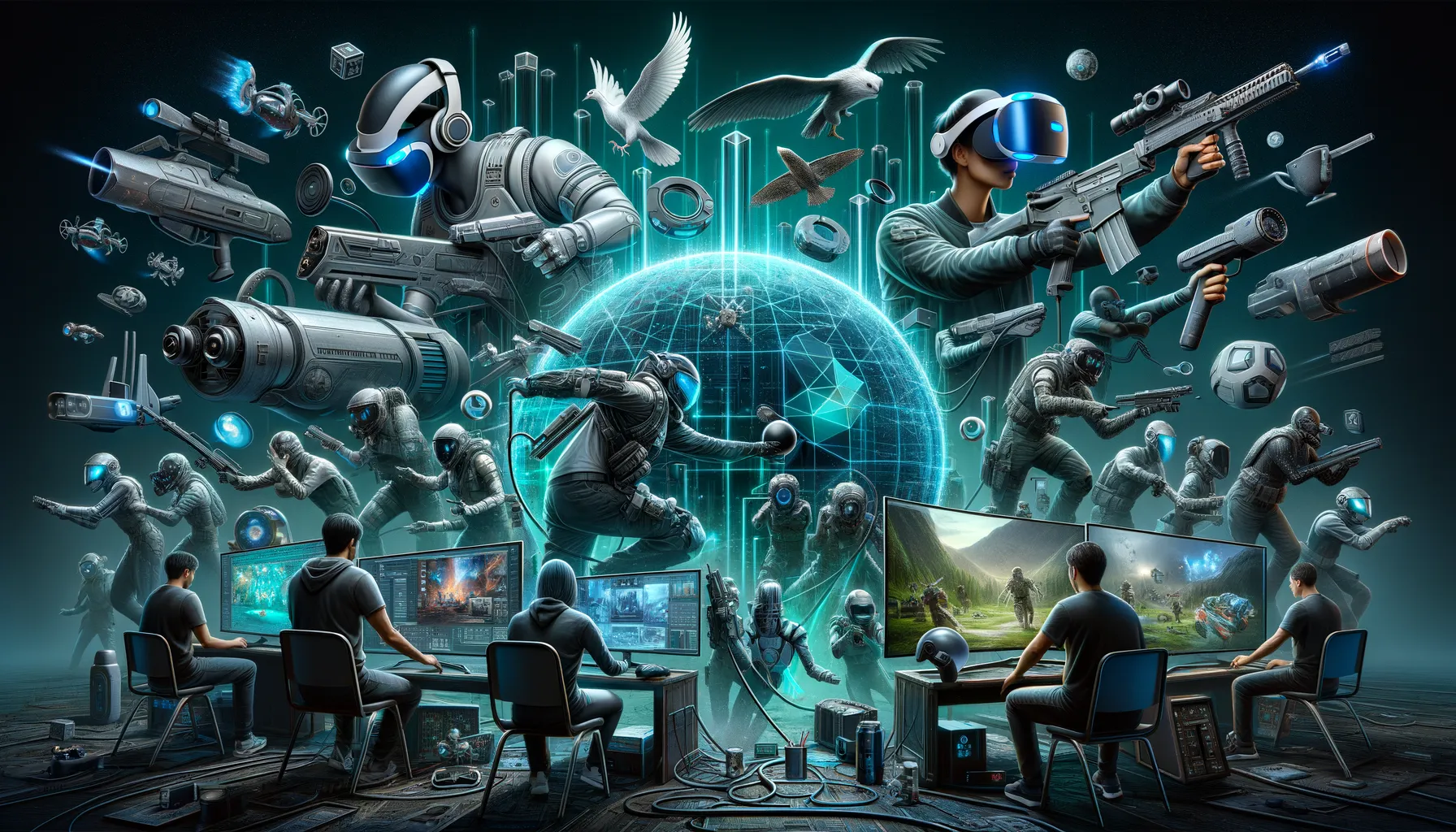Monday 15 April 2024, 12:30 PM
Exploring the exciting world of immersive gaming experiences
Immersive gaming combines VR, AR, and MR for highly realistic experiences, merging digital content with the real world or offering complete virtual environments. It fosters social interaction, physical activity, and can be experienced through various devices.
What is Immersive Gaming?
Immersive gaming is an exciting frontier in the world of video games, offering players experiences that are as close as you can get to entering into the worlds created by game developers. This type of gaming utilizes various technologies, including virtual reality (VR), augmented reality (AR), and mixed reality (MR), to make the gaming environment feel incredibly real and interactive.
The Rise of Virtual Reality (VR)
Virtual reality gaming involves players wearing a head-mounted display (HMD), which provides a 360-degree view of a virtual world. Popular VR platforms like Oculus Rift, HTC Vive, and PlayStation VR have made significant inroads into the consumer market. These platforms transport players into incredibly detailed worlds where they can interact with the environment and other players through motion sensors and handheld controllers.
VR Games to Check Out
If you're new to VR, consider starting with games like Beat Saber, where you slash through beats with virtual lightsabers, or Half-Life: Alyx, which is a highly immersive, narrative-driven adventure that has set a new benchmark for VR gaming.
Augmented Reality (AR) Gaming
Unlike VR, augmented reality integrates digital content into the real world. Using devices like smartphones or AR glasses, players can see the real world overlaid with digital elements. Pokémon GO is a well-known example, where players catch virtual creatures in real-world locations. Another popular AR game is Ingress, where players join factions and battle for control of virtual territories at real-world landmarks.
Why AR is Fascinating
What makes AR games fascinating is their ability to merge gameplay with real-life activities, encouraging physical activity and exploration of new places. It’s a less isolative experience than VR, perfect for social interactions and outdoor fun.
Mixed Reality (MR) Gaming
Mixed reality is somewhat less known but immensely promising. It combines elements of both VR and AR, overlaying interactive digital environments onto the real world and allowing for an even more seamless interaction between the two. Microsoft’s HoloLens and Magic Leap are two of the pioneering MR headsets trying to push the boundaries of what's possible.
Experiencing MR
MR games are still in early development, but they promise exciting prospects. The ability to interact with digital objects while seeing your actual hands moving them about without any controllers can be surreal!
The Tech Behind the Magic
Immersive gaming wouldn't be what it is without some serious tech backing it up. High-end graphics processing, advanced motion tracking, spatial audio, and AI are just some of the technologies making these experiences more engaging and realistic.
The Importance of Sound
Spatial audio, for instance, significantly enhances immersion. It allows sounds in a game to come from all around you in a 3D space — just like in the real world. This cue helps make the virtual environment feel more tangible and navigable.
Social and Multiplayer Aspects
Immersive gaming is not just about the solo experience; it offers vast social and multiplayer scenarios. VR chat rooms allow people from all over the globe to meet in virtual spaces as avatars. Players can hang out, play games, or even attend virtual concerts and events together.
Building Communities
These multiplayer experiences are crucial for building communities. They allow players to interact in ways that standard video games can't, providing a personal interaction that’s closer to a real-life meeting. As these communities grow, they often become hubs for sharing, learning, and even fostering creative collaborations.
The Future of Immersive Gaming
The possibilities for the future of immersive gaming are genuinely staggering. We are seeing early experiments with using brain-computer interfaces to control game elements purely with thought. There's also ongoing research into haptic feedback technology that could let players feel virtual objects through gloves or suits.
Ethical and Health Considerations
As we advance, however, we must also consider the ethical and health implications of these technologies. Ensuring safe, inclusive, and responsible development and use of immersive tech is crucial. There’s a fine balance between creating engaging experiences and ensuring they do not foster addictive behaviors or lead to detachment from reality.
Getting Started with Immersive Gaming
Choosing the Right Platform
If you're interested in starting with immersive gaming, consider first what type of experience you're looking for. If fully immersive worlds sound exciting, VR might be for you. If you prefer integrating play with the real world, then AR games played via smartphones are a great starting point. For those interested in cutting-edge technology applications, diving into MR would be most thrilling.
Setting Up Your Space
Make sure you have enough space to play safely, especially for VR and MR, where you might be moving around a lot. Check the system requirements for the hardware you pick, as some may require more powerful specifications or particular setups.
Conclusion
Immersive gaming is more than just playing games; it's about experiencing them in wholly new and exhilarating ways. Whether it's VR, AR, or MR, these technologies offer unique ways to escape into different worlds, connect with people, or bring your game into the street. So grab a headset, download an app, and start exploring the exciting world of immersive gaming experiences! Enjoy every moment of your virtual adventures!

